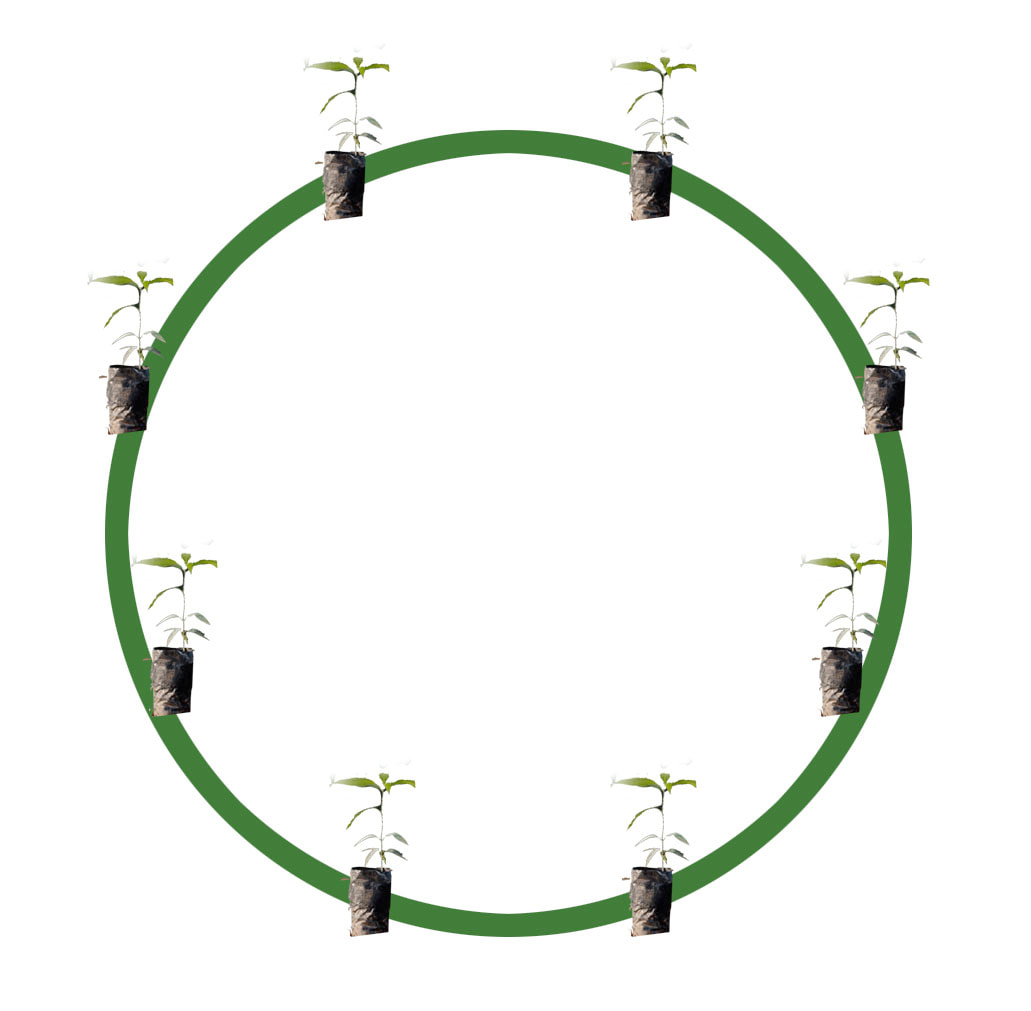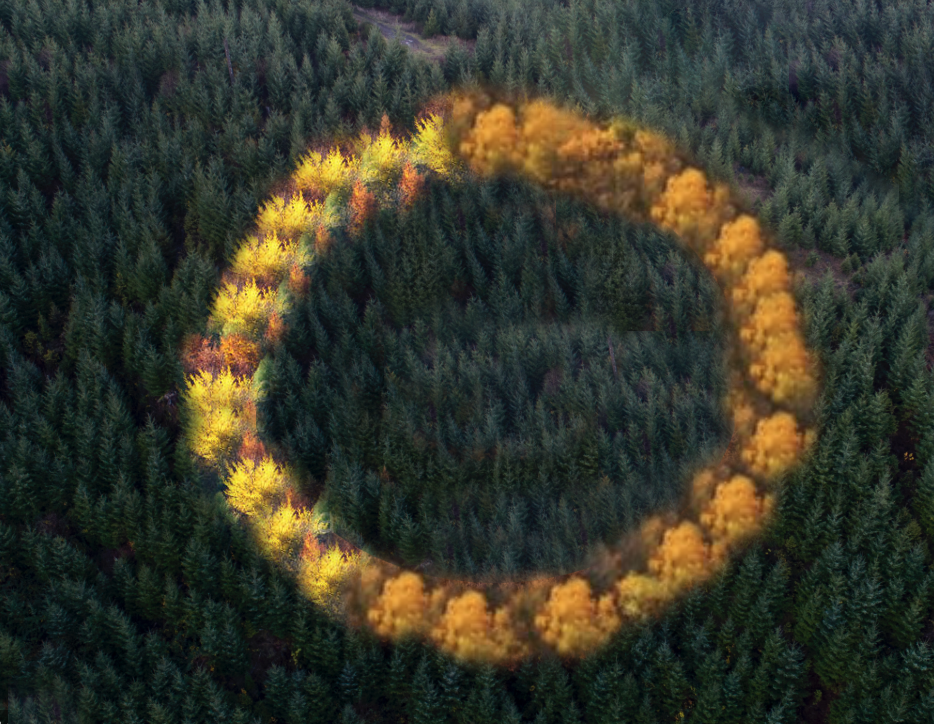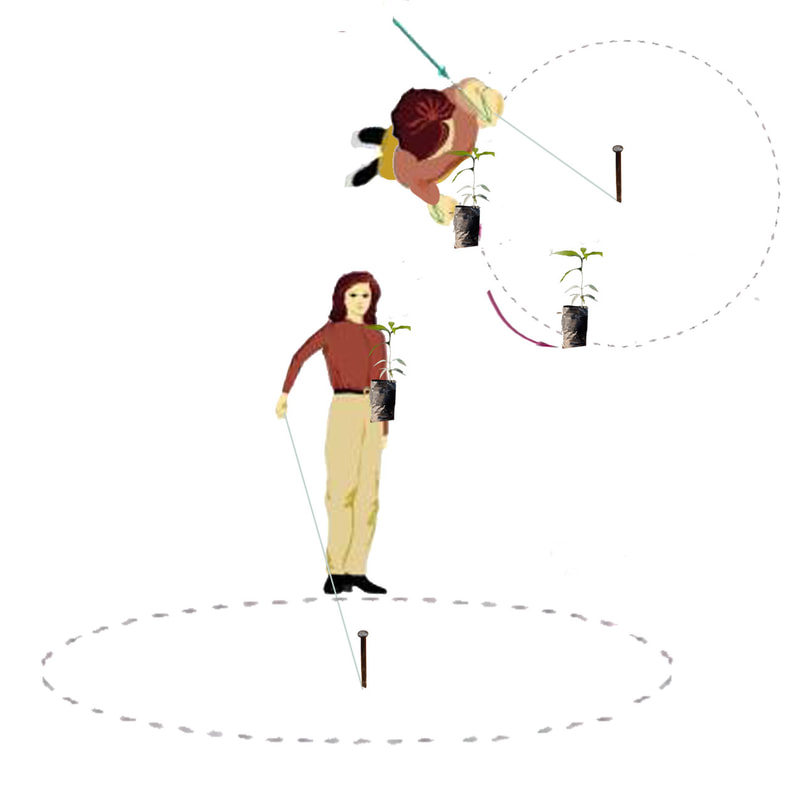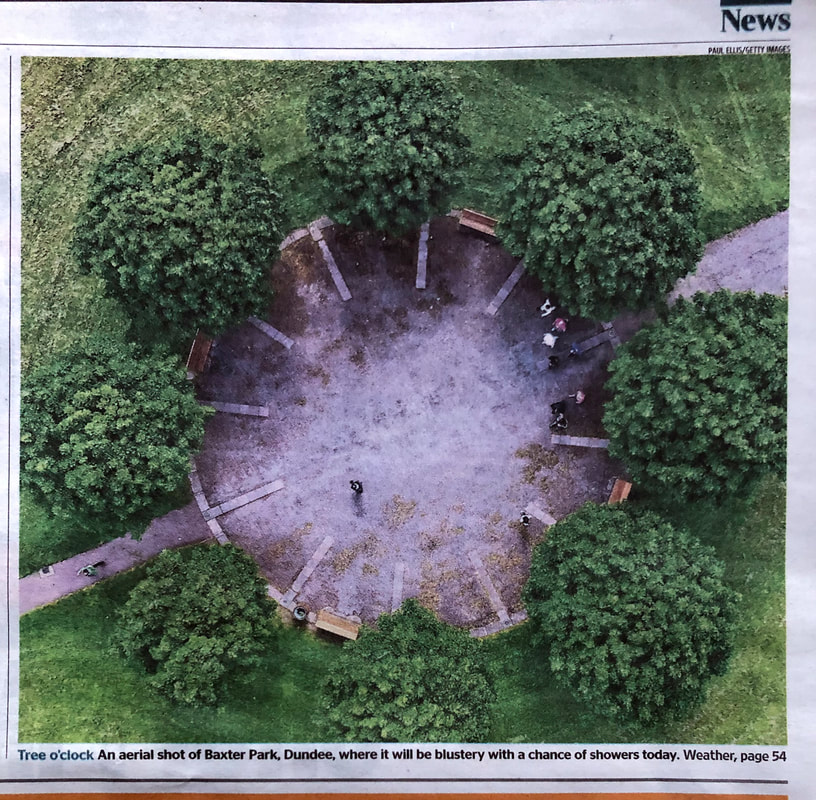|
CALL FOR PARTICIPATION
JOIN US Trees for Life has a call for volunteers around the world to create their own tree circles wherever they are located. What is a tree circle? As the title suggests, a tree circle is a group of trees, or similar flora, planted in a circle. A circle of trees contributes to the retention of water in the soil and to cleaning the air through natural systems. It also creates wide canopy areas that provide shade and reduce the impact of heat islands in urbanized areas. Up to 83% of the water that falls on earth has been condensed directly from the atmosphere by trees. Planting trees can help create a dynamic system that helps in carbon capture and restoration of aquatic systems. Trees and forests act as huge condensing systems and capture water in the air. In the future we will have to ask ourselves not only "How much precipitation or heat does an area impact?" but "How much tree cover do we have around our living and working areas?" |
Why a circle of trees?
A circle of trees is a visual metaphor for our planet. It represents the hope and aspiration to work together to preserve our planet through more active plantations.
As more circles are planted around the world we are also creating new ways to see and experience those trees: not just from the ground, but from the air. These circles will appear in the landscape as works of natural and observable art in Google Earth. So no matter where we are in the world, this simple gesture of planting tree circles will be visible to anyone with internet access. Everyone can feel connected by this local and global action.
A circle of trees is a visual metaphor for our planet. It represents the hope and aspiration to work together to preserve our planet through more active plantations.
As more circles are planted around the world we are also creating new ways to see and experience those trees: not just from the ground, but from the air. These circles will appear in the landscape as works of natural and observable art in Google Earth. So no matter where we are in the world, this simple gesture of planting tree circles will be visible to anyone with internet access. Everyone can feel connected by this local and global action.
WHERE CAN I PLANT
|
Those working in forestry in areas that are being replanted ~ a tree circle can be subtle and composed of evergreen and deciduous trees to make a real visual statement seen in the Autumn but not necessarily experienced directly in the forest.
As citizens we can make our homes into places for proactive climate solutions as well as ask that our local governments, schools, private sector and others consider adding tree circles as part of their landscape plans.
We can work globally with other communities to illustrate a new resilience of nature in our own backyards. There are overall benefits, too! The benefits from tree planting have year-round impact. They offer places of shade and shelter and cooling in the summer. They offer support to biodiversity and pollinators. The health of the living world is our health after all, too.
As citizens we can make our homes into places for proactive climate solutions as well as ask that our local governments, schools, private sector and others consider adding tree circles as part of their landscape plans.
We can work globally with other communities to illustrate a new resilience of nature in our own backyards. There are overall benefits, too! The benefits from tree planting have year-round impact. They offer places of shade and shelter and cooling in the summer. They offer support to biodiversity and pollinators. The health of the living world is our health after all, too.




